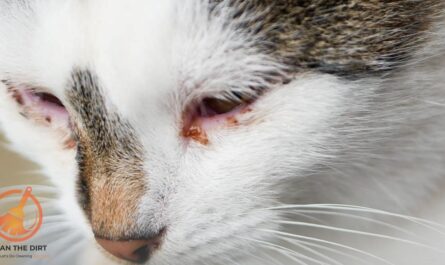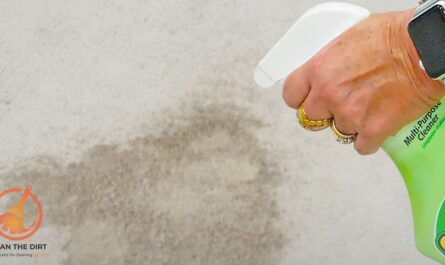Table of Contents
Introduction
Welcome to our comprehensive guide on how to clean a dogs ears at home. As dog owners, we know that our loved companions rely on us for their well-being, and maintaining good ear hygiene is a crucial part of their overall healthcare routine. In this article, we’ll walk you through the step-by-step process of safely and effectively cleaning your dog’s ears in the comfort of your own home.
It’s no secret that dogs sometimes have ear problems, such as infections or wax buildup. That’s why regular ear cleaning is essential to prevent discomfort and potential health problems for your dog friend. By learning the proper techniques and taking proactive measures, you can ensure that your dog’s ears stay clean, healthy, and free from irritation.
Throughout this guide, we’ll provide you with practical tips, expert advice, and easy-to-follow instructions on how to clean a dogs ears at home. Whether you’re a first-time dog owner or a seasoned pet parent looking to refresh your ear care routine, you’ll find everything you need to know right here. So, let’s dive in and learn how to keep those floppy ears clean and happy.
Understanding Dog Ear Anatomy
Before diving into the cleaning process, it’s essential to have a basic understanding of your dog’s ear anatomy. How to clean a dogs ears at home effectively begins with knowing the structure you’re working with.
The outer ear, middle ear, and inner ear are the three primary components of a dog’s ear. The outer ear, also known as the pinna or auricle, is the visible part that we often see flopping or standing erect, depending on the breed. It serves to collect and funnel sound waves into the ear canal.
Next, we have the ear canal, which is a tube-like structure that extends from the outer ear to the eardrum. The ear canal is lined with delicate skin and glands that produce cerumen, commonly known as ear wax. This wax helps to lubricate and protect the ear canal from debris and moisture.

Finally, the inner ear contains the delicate structures responsible for hearing and balance, including the eardrum (tympanic membrane), ossicles, cochlea, and vestibular system. These intricate parts work together to transmit sound vibrations and maintain your dog’s sense of balance.
Understanding the anatomy of your dog’s ears is crucial for working on the process of how to clean a dogs ears at home safely. It’s essential to be gentle and avoid inserting any cleaning tools too deeply into the ear canal, as this can cause injury or discomfort for your pet. With this knowledge in mind, let’s move on to the practical steps of ear cleaning to ensure your dog’s ears stay healthy and happy.
Signs That Your Dog’s Ears Need Cleaning
As responsible pet owners, it’s essential to pay attention to the signs that indicate when your dog’s ears need cleaning. By recognizing these signs early on, you can take proactive steps for this guide on how to clean a dogs ears at home, maintain your dog’s ear health, and prevent potential issues. Here are some common indicators that it’s time to clean your dog’s ears at home.
1. Excessive Scratching
If you notice your dog frequently scratching or pawing at their ears, it could be a sign of irritation or discomfort caused by wax buildup or an underlying ear infection.
2. Head-Shaking
Dogs may shake their heads vigorously to try to dislodge debris or relieve itching in their ears. While occasional head shaking is normal, persistent or excessive shaking could signal an ear problem that requires attention.
3. Foul Odor
A strong, unpleasant odor emanating from your dog’s ears is often indicative of an infection or buildup of wax and debris. If you notice an unusual smell coming from your dog’s ears, it’s time to investigate further.
4. Visible Discharge
Inspect your dog’s ears regularly for any signs of discharge, such as pus or a dark, waxy substance. Discharge can indicate an infection or other underlying issue that may require cleaning your dog’s ears at home.
5. Redness or Swelling
Inflammation, redness, or swelling in and around the ear canal are common signs of irritation or infection. These symptoms may be accompanied by discomfort or sensitivity when touching the ears.
6. Changes in Behavior
Pay attention to any changes in your dog’s behavior, such as tilting their head to one side or showing signs of pain when their ears are touched. These behavioral changes could indicate an underlying ear problem that needs to be addressed promptly.
By staying vigilant and recognizing these signs early on, you can take proactive measures to maintain your dog’s ear health and address any issues promptly. Now that you know what to look out for, let’s move on to the next section and learn how to clean your dogs ears at home safely and effectively.
Preparation
Before diving into the process of how to clean a dogs ears at home, it’s important to gather all the necessary supplies and prepare both yourself and your furry friend for the cleaning session. This is what you will require to begin.
1. Ear Cleaning Solution
Choose a high-quality ear-cleaning solution specifically formulated for dogs. Avoid using alcohol-based or harsh cleaning products, as they can cause irritation and discomfort.
2. Cotton Balls or Pads
Use soft, gentle cotton balls or pads to apply the ear-cleaning solution and wipe away debris from your dog’s ears. Cotton swabs should not be used as they can damage the ear canal by pushing material deeper inside.
3. Treats for Positive Reinforcement
Have your dog’s favorite treats on hand to reward them for their cooperation during the cleaning process. Positive reinforcement can help make the experience more enjoyable for your loved pet friend and encourage good behavior.
4. Towel or Blanket
Lay down a towel or blanket in a quiet, comfortable area where you can easily access your dog’s ears for cleaning. This will help prevent mess and provide a cozy spot for your dog to relax during the process.
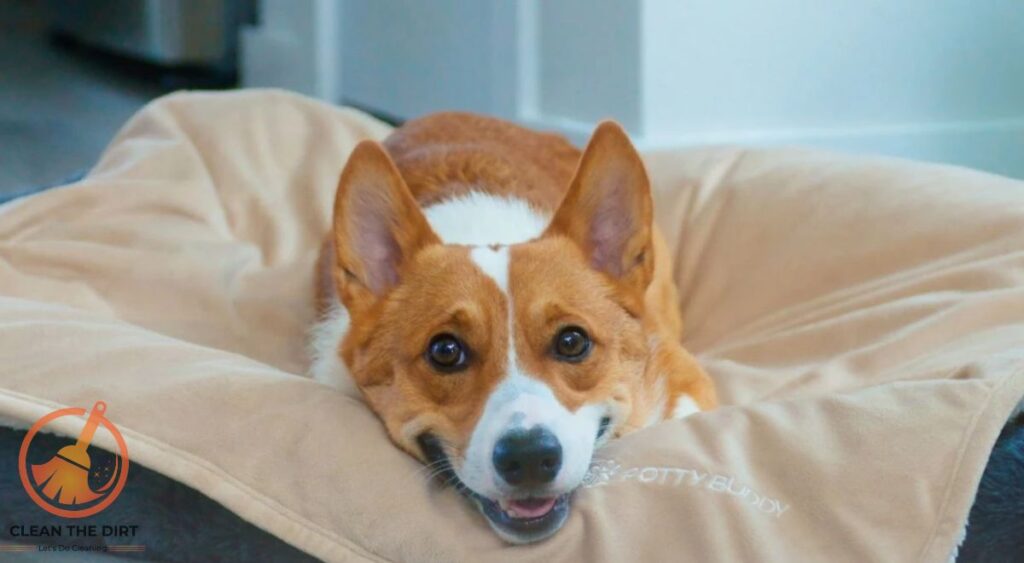
5. Patience and Calmness
Approach the ear-cleaning process with patience and a calm manner. Dogs can pick up on your energy, so staying relaxed and gentle will help keep them at ease during the procedure.
By gathering these supplies and mentally preparing yourself and your dog for the ear-cleaning session, you’ll set the stage for a successful and stress-free experience. Now that you’re prepared, let’s move on to the next step and learn how to clean your dogs ears at home effectively.
How to Clean a Dogs Ears at Home? Step-by-Step Guide
Now that you’re prepared, let’s walk through the process of how to clean a dogs ears at home step by step. Follow these instructions carefully to ensure a safe and effective ear-cleaning experience for your beautiful pet.
Step 1: Introducing Your Dog to the Cleaning Process
- Begin by gently petting and reassuring your dog to help them feel calm and relaxed.
- Show them the ear-cleaning solution and allow them to sniff and become familiar with it.
- Offer treats and praise to create a positive association with the ear-cleaning process.
Step 2: Applying the Ear Cleaning Solution
- Hold your dog’s head steady and lift their ear flap to expose the ear canal.
- Pour a tiny bit of the ear-cleaning solution onto a pad or cotton ball. Make sure not to soak it excessively.
- Gently squeeze the base of your dog’s ear to help the solution penetrate the ear canal.
- For 20 to 30 seconds, massage the base of the ear to disperse the solution and remove any debris.
Step 3: Wiping Away Debris
- Use a fresh cotton ball or pad to gently wipe away any loosened debris, wax, or dirt from the ear canal. To avoid harm, do not insert anything deeply into the ear canal.
- Continue wiping until the cotton ball comes away clean, and there is no more debris visible.
Step 4: Offering Praise and Rewards
- Once you’ve finished cleaning one ear, offer your dog plenty of praise and a tasty treat as a reward for their cooperation.
- Repeat the process for the other ear, remembering to be patient and gentle throughout.
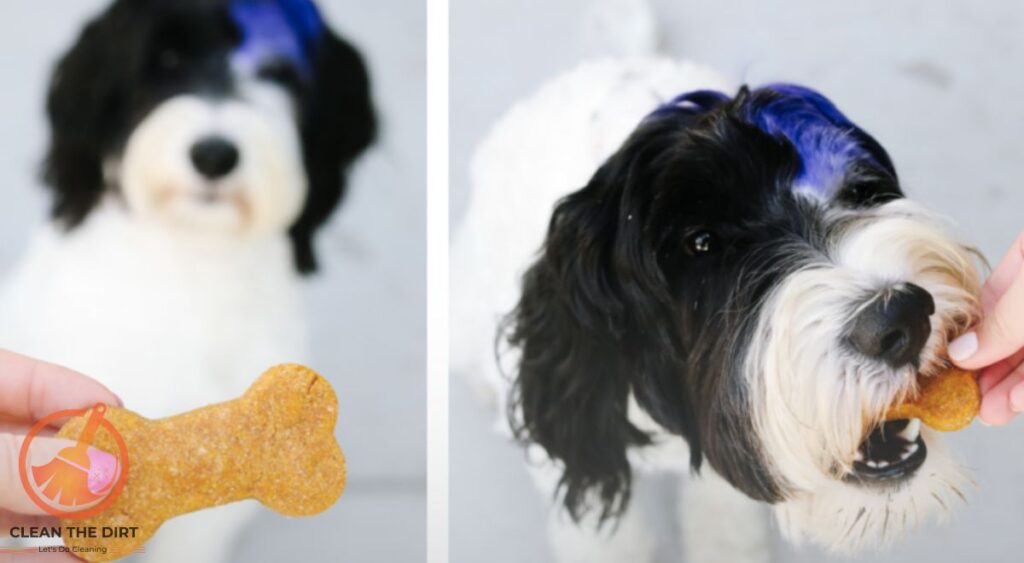
By following these steps and using a gentle touch, you can effectively clean your dog’s ears at home without causing discomfort or stress. Regular ear cleaning can help prevent ear infections and maintain your dog’s ear health, so be sure to incorporate it into your pet care routine. Now, let’s move on to the next section and explore some important safety tips for how to clean a dogs ears at home.
Safety Tips
When it comes to how to clean a dogs ears at home, safety should always be a top priority. Follow these essential tips to ensure a safe and comfortable ear-cleaning experience for your beloved companion.
1. Use Dog-Specific Ear Cleaning Products
Choose a high-quality ear-cleaning solution specifically formulated for dogs. Avoid using household products or solutions intended for humans, as they may contain ingredients that could irritate your dog’s ears.
2. Avoid Inserting Objects into the Ear Canal
Never insert cotton swabs, Q-tips, or any other objects deep into your dog’s ear canal. This can push debris further into the ear, cause injury, or even rupture the eardrum. Stick to gently wipe the outer ear and visible parts of the ear canal.
3. Be Gentle and Patient
Approach the ear-cleaning process with a gentle touch and plenty of patience. Avoid rushing or forcing your dog to cooperate. If your dog starts acting tense or uncooperative, step away and try again at a later time.
4. Monitor for Signs of Discomfort
Pay close attention to your dog’s body language during the ear-cleaning process. If they show signs of discomfort, such as pulling away, whimpering, or yelping, stop immediately and consult your veterinarian.
5. Clean Only When Necessary
While regular ear cleaning is important for maintaining ear health, it’s essential not to overdo it. Cleaning your dog’s ears too frequently can disrupt the natural balance of the ear and lead to irritation. Follow the cleaning schedule that your veterinarian suggested.
6. Seek Veterinary Advice for Persistent Issues
If you notice persistent symptoms such as excessive wax buildup, foul odor, or signs of infection, consult your veterinarian for advice. They can help diagnose any underlying issues and recommend appropriate treatment options.
By following these safety tips, you can ensure that the process of how to clean a dogs ears at home is both effective and safe for your pet friend. Remember to approach ear cleaning with care and always prioritize your dog’s comfort and well-being. Now, let’s move on to the next section and discuss the frequency of ear cleaning for optimal ear health.
Frequency of Ear Cleaning
Determining how to clean your dogs ears at home depends on various factors, including your dog’s breed, activity level, and ear health. Here are some general guidelines to help you establish a regular ear-cleaning schedule.
1. Regular Inspection
Develop the habit of checking your dog’s ears regularly, ideally once a week. Look for any signs of wax buildup, discharge, redness, or inflammation. Regular inspection allows you to catch any potential issues early on and address them promptly.
2. Breed and Ear Shape
Some dog breeds are more prone to ear issues due to their ear shape or size. Breeds with floppy ears, such as Cocker Spaniels or Basset Hounds, may require more frequent cleaning to prevent moisture buildup and potential infections. Talk to your veterinarian about the specific needs of your dog’s breed.
3. Activity Level and Environment
Dogs that spend a lot of time outdoors, especially in humid or damp conditions, may be more susceptible to ear problems. If your dog loves swimming or enjoys outdoor adventures, consider cleaning their ears more frequently to remove any moisture and debris.
4. Previous Ear Health Issues
If your dog has a history of ear infections or other ear health issues, your veterinarian may recommend a more frequent cleaning schedule. Keeping your dog’s ears clean can help prevent recurrent infections and maintain their overall ear health.
5. Veterinary Recommendations
Your veterinarian is your best resource for determining the appropriate frequency of ear cleaning for your dog. They can assess your dog’s individual needs and provide personalized recommendations based on their health status and medical history.
Ultimately, the key is to strike a balance between keeping your dog’s ears clean and avoiding excessive cleaning that could disrupt the natural balance of the ear. With regular inspection and guidance from your veterinarian, you can establish a how to clean a dogs ears at home routine that promotes optimal ear health for your pet.
Additional Tips for Ear Health
In addition to regular ear cleaning, there are several other steps you can take to promote optimal ear health for your dog. Incorporating these tips into your how to clean a dogs ears at home routine can help prevent ear problems and keep your furry friend’s ears happy and healthy.
1. Keep Ears Dry
Moisture in the ears can create an environment that helps bacterial and yeast growth, leading to ear infections. After bathing your dog or activities involving water, such as swimming, be sure to thoroughly dry their ears to remove any excess moisture.
2. Trim Excess Hair
Long hair in and around the ear canal can trap dirt, debris, and moisture, increasing the risk of ear infections. Regularly trim excess hair around your dog’s ears to help keep them clean and prevent irritation.
3. Avoid Irritants
Be mindful of potential irritants that could come into contact with your dog’s ears, such as harsh chemicals in grooming products or environmental allergens. Choose gentle, dog-safe grooming products and minimize your dog’s exposure to known allergens whenever possible.
4. Monitor Diet and Nutrition
A balanced diet rich in essential nutrients, including omega-3 fatty acids, can help support your dog’s overall health, including their ear health. Consult with your veterinarian to ensure your dog is receiving a diet that meets their nutritional needs.
5. Regular Veterinary Check-ups
Schedule regular check-ups with your veterinarian to monitor your dog’s ear health and address any concerns promptly. Your veterinarian can conduct thorough ear examinations, recommend preventive care measures, and provide treatment for any underlying ear issues.
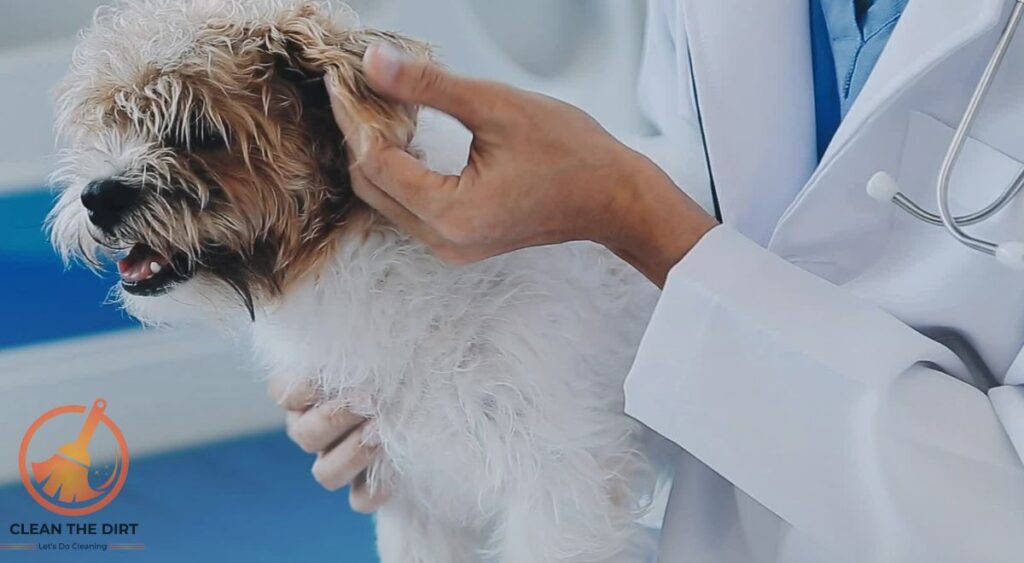
6. Avoid Over-cleaning
While regular ear cleaning is important, avoid over-cleaning your dog’s ears, as this can disrupt the natural balance of the ear and lead to irritation. Follow your veterinarian’s recommendations for the frequency of ear cleaning based on your dog’s individual needs.
Incorporating these additional tips into your how to clean a dogs ears at home routine can help maintain your dog’s ear health and prevent potential problems down the road. By being proactive and attentive to your dog’s ears, you can ensure they enjoy a lifetime of happy and healthy ears.
Conclusion
Congratulations on reaching the end of our comprehensive guide on how to clean a dogs ears at home. We’ve covered everything you need to know to ensure a safe, effective, and stress-free ear-cleaning experience for your beloved friend.
By following the step-by-step instructions outlined in this guide, you can confidently clean your dog’s ears at home, knowing that you’re promoting their ear health and overall well-being. Remember to approach the process with patience, gentleness, and a positive attitude, and always prioritize your dog’s comfort and safety.
Regular ear cleaning is an essential part of your dog’s grooming routine, helping to prevent ear infections, remove wax and debris, and maintain optimal ear health. By incorporating the tips and techniques shared in this guide on how to clean a dogs ears at home, you can enjoy peace of mind knowing that you’re providing the best possible care for your pet companion.
If you ever have any questions or concerns about how to clean a dogs ears at home or your dog’s ear health in general, don’t hesitate to reach out to your veterinarian for guidance and support. They’re always there to help you navigate any challenges and ensure the health and happiness of your beloved pet.
Now it’s time to take a quick look at the the comparison table that is indicating the difference between the professional ear cleaning and home ear cleaning for dog’s ears.
| Aspect | Professional Ear Cleaning | Home Ear Cleaning |
|---|---|---|
| Skill Required | Requires trained veterinary expertise | Can be done by pet owners with guidance |
| Cost | Typically more expensive | Cost-effective, with one-time purchase of cleaning supplies |
| Frequency | Usually performed during veterinary visits or as needed | Regularly incorporated into pet care routine, frequency varies |
| Equipment | Professional-grade tools and equipment | Dog-specific ear cleaning solution, cotton balls/pads |
| Safety | Conducted under professional supervision, minimizing risk of injury or discomfort | Requires careful handling to avoid injury or irritation |
| Convenience | Requires scheduling appointments and travel to the veterinary clinic | Can be done at home, offering convenience and flexibility |
| Personalized Guidance | Tailored to the individual dog’s ear health needs | Pet owners can follow general guidelines with the option to consult a veterinarian for specific concerns |
Thank you for taking the time to learn about how to clean a dogs ears at home. We hope you have many more years of loving and twirling tails with your pet by your side.
Frequently Asked Questions (FAQs)
How often should I clean my dog’s ears at home?
The frequency of ear cleaning depends on various factors such as your dog’s breed, activity level, and ear health. Generally, cleaning your dog’s ears once a week to once a month is sufficient for most dogs. However, consult your veterinarian for personalized recommendations based on your dog’s individual needs.
Can I use regular soap or water to clean my dog’s ears at home?
No, it’s not recommended to use regular soap or water to clean your dog’s ears. These substances can disrupt the natural balance of the ear and potentially irritate it. Instead, use a dog-specific ear-cleaning solution recommended by your veterinarian.
What if my dog’s ears are sensitive or painful during the cleaning process?
If your dog shows signs of discomfort or pain during the ear-cleaning process, stop immediately and consult your veterinarian. Ear sensitivity or pain could indicate an underlying ear infection or injury that requires professional attention.
Can I clean my dog’s ears at home if they have an ear infection?
It’s essential to seek veterinary advice before attempting to clean your dog’s ears at home if they have an ear infection. Cleaning infected ears improperly can exacerbate the condition and potentially cause further harm. Your veterinarian can guide the appropriate treatment and care for your dog’s ear infection.
What should I do if I encounter excessive wax buildup or a foul odor in my dog’s ears?
Excessive wax buildup or a foul odor in your dog’s ears may indicate an underlying issue that requires veterinary attention. Consult your veterinarian for a thorough examination and appropriate treatment recommendations. Avoid attempting to clean the ears at home without professional guidance in such cases.
Are there any preventive measures I can take to maintain my dog’s ear health?
Yes, there are several preventive measures you can take to maintain your dog’s ear health, including regular ear inspections, keeping their ears dry, trimming excess hair, and feeding a balanced diet. Consult with your veterinarian for personalized recommendations tailored to your dog’s specific needs.
You May Also Like: How to Clean Cat Ears Without Solution? Effective and Safe Methods



